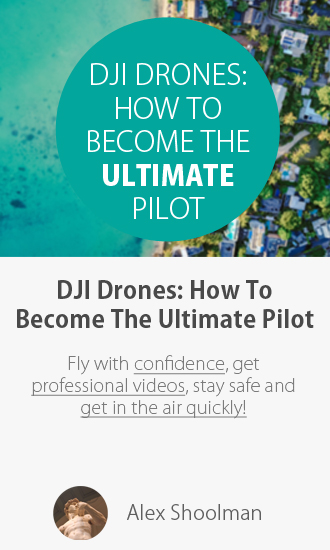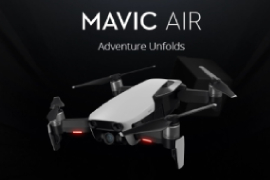With the drone industry being only a few years old it’s exciting to see them continually innovating and coming out with new advancements just like we saw with smartphones around a decade ago. But what will we see over the next one to two years? Are we going to see a rapid improvement like we have over the past two years? Or will it be a much slower change? Let’s take a look!
Table of Contents
Two Different Markets
To start to answer these questions about what we will likely see in the future, I’m going to split things up into two different sections. These sections are the Consumer and Business drone markets.
Consumer drones are primarily used for photography, videography and the fun of flying. Business drones on the other hand can be used for anything from search and rescue to fighting fires, de-icing wind turbines, surveying areas for insurance or agriculture and more. It’s clear that these are two vastly different Industries which will require vastly different drones and different technologies.
On top of splitting things up between consumer and business, we’ll also be having a look at drone delivery as well as the new systems that will be coming online soon to help manage autonomous drone flying and large volumes of drones. These systems will also be responsible for identifying, securing and taking down – if necessary – rouge drones that are in no fly zones.
So to get started let’s have a look at consumer drone technology, where it is now and where it should be in another 2 years’ time.
Consumer Drones
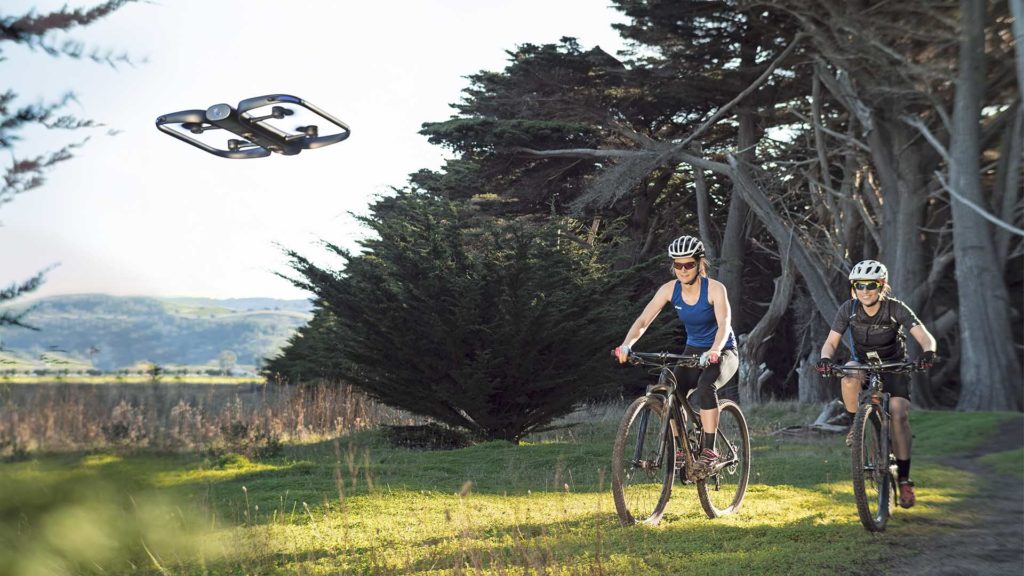
The Skydio R1 Drone
Currently the best drones you can buy arguably come from DJI. From the DJI Spark, to the DJI Mavic Air or Mavic Pro Platinum, all the way up to the Phantom 4 Pro few companies can hold a candle to their amazingly quick product cycle and ever increasing technology advancements.
One of the few companies that can – but only in one small specific aspect – is Skydio with their revolutionary new R1 drone. Everyone that has tried it out agrees that its advanced autonomous flying and object avoidance technology is a full next level on top of anything DJI has.
While DJI drones can sense walls etc and stop or potentially fly around them a bit, Skydio’s R1 seems to act more like it has a fully aware and very expert pilot at the helm. Smoothly flying under, around or over any and all obstacles all while keeping a great shot and you in view.
It’s no doubt that this object avoidance tech is now the thing to beat and DJI isn’t going to take it lying down. While Skydio still hasn’t matched DJI’s other great advantages (mainly price, size and so on) they will no doubt iterate quickly.
Drones Of 2018
Although nothing is always 100% certain, we’ve got some pretty good leaks of what some of the latest and greatest drones of 2018 will be. Virtually all of the DJI Mavic Pro II specifications have already been found out and we even know what’s in store for the Phantom 5 too.
While we don’t know every detail it looks like this year will be full of incremental increases in camera quality, flight time and expanded object avoidance abilities. DJI is also set to release (according to OsitaLV) interchangeable lens’ for the Phantom 5 as you can see below.
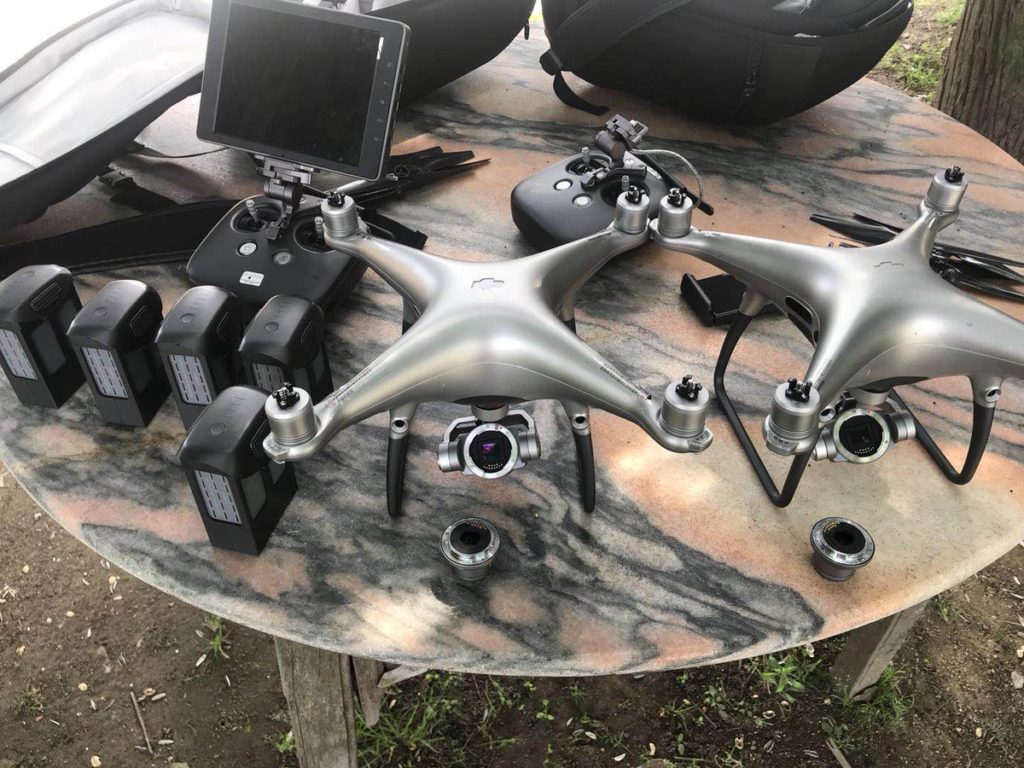
These will come in four separate focal lengths, 15mm, 24mm, 35mm and 50mm. Together with the Phantom 5’s rumoured 1″ sensor it should provide a significant bump up in photo quality and abilities.
Consumer Drones Of 2020
Over the course of the past 5 years, DJI has released many drones. If we extrapolate the trend of their incremental improvements out a bit into 2020, it’s not hard to see where things are going. As hardware miniaturisation increases, battery technology advances and demand for drones explodes all the specs we routinely quote here will just get better.
So first let’s extrapolate out the max flight times:
- Phantom 4: Released Mar 2016, Flight Time ~ 30 minutes
- Phantom 3: Released Apr 2015, Flight Time ~ 25 minutes
- Phantom 2: Released Dec 2013, Flight Time ~ 25 Minutes
- Phantom 1: Released Jan 2013, Flight Time ~10 Minutes
So after the first huge jump in flight time from Jan 2013 to Dec 2013, it’s been pretty slow going. This is likely due to battery tech improving… but the drones having a larger and larger energy draw due to new features like autonomous flight modes and object avoidance.
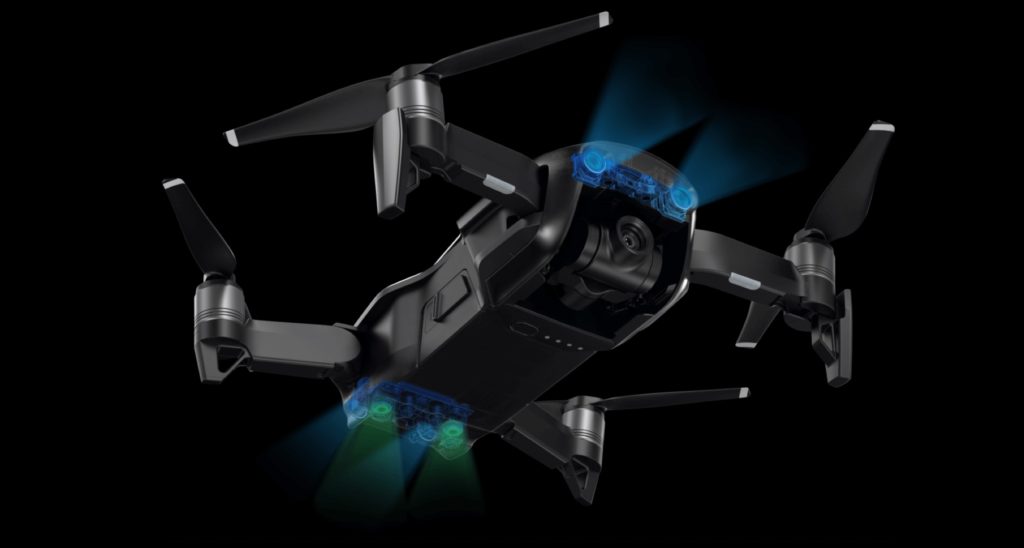
Source: DJI
Given that I’d expect DJI to aim for and achieve a similar level of autonomous flying that the Skydio R1 has already got now, it’s safe to say these energy demands will likely increase. As such I’m predicting a mild, if at all improvement. Say 35 minutes at best maximum flight times.
Along with the small increase in flight times, expect larger sensor sizes to give better low light performance, interchangeable lens’ to become the norm – at least for the Phantom series – and as mentioned, fully autonomous flying modes as per the Skydio R1.
Business Drones
There are a few different major industries as far as drones go. There’s the entire section of autonomous drone delivery where most big companies seem to be rolling their own, specific drones. Then there’s the other sectors like agriculture, surveying or search and rescue.
These other sectors seem to be using drones made by your more normal drone businesses such as DJI. As autonomy and technology advances, expect more and more people in these industries to start using drones as “the norm”.
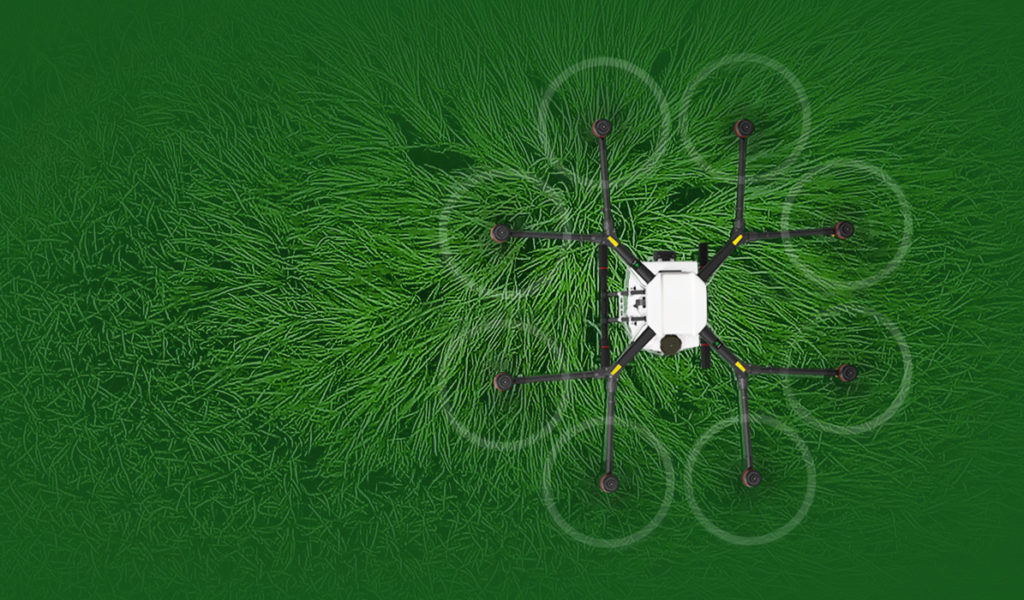
The DJI MG-1. Source: dji.com
From spraying crops with drones, to delivering blood with drones, to everything in between, companies will quickly adopt the technology once it’s proven to give easy returns.
Business Drones Of 2018
Over 2018 and 2019, it’s clear that a lot of the work that will get done will be surrounding not the drones themselves, but the management systems. Setting up the laws for flying drones outside of VLOS (Visual Line Of Site), creating the drone air traffic control systems for the future or deploying advanced anti-drone technologies to protect critical infrastructure.
These will be a huge focus of the drone industry as this brand new industry finally slows down a little due to counties and governments demanding it be more tightly regulated and controlled.
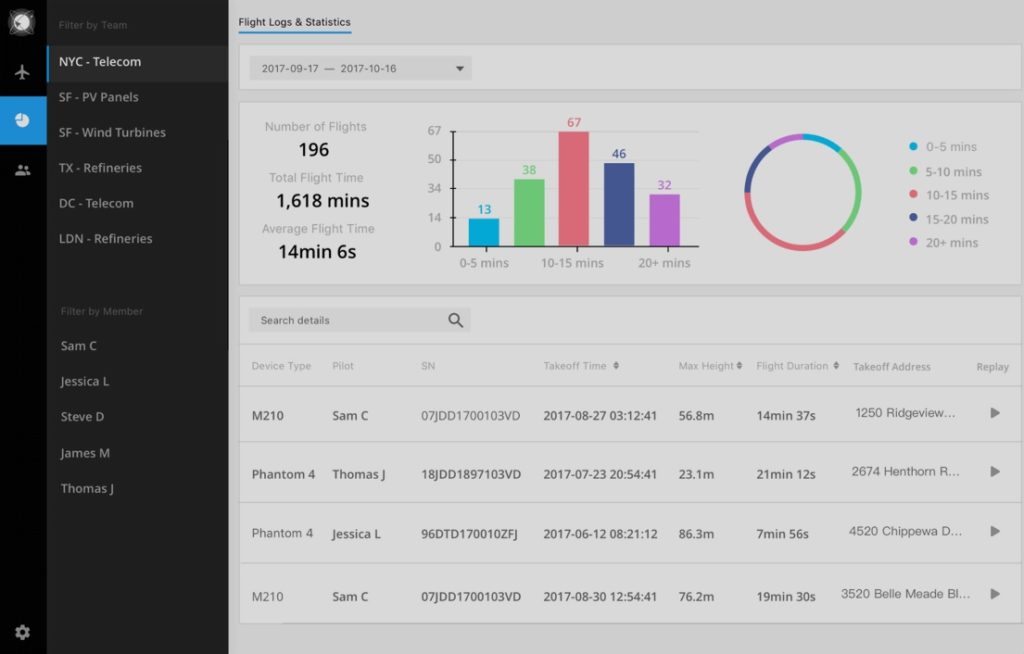
DJI FlightHub Software
We’re already seeing companies releasing management software for controlling fleets of drones such as FlightHub and this will only get more advanced over time. There’s new laws being discussed about having all drones broadcast their identification information for safety and security reasons. And all this doesn’t even take into considering how we will entrust and manage the huge fleets of autonomous delivery drones soon to be deployed.
Business Drones Of 2020
Finally we have the predictions for what drones will look like for businesses in 2020. This honestly seems like it’s entirely at the mercy of laws around the world. The technology for delivering anything from sushi to medical results already exists. But until a country allows for fully autonomous drone flight outside of VLOS, drone delivery isn’t really going anywhere.
The other industries such as agriculture (surveying and spraying), search and rescue as well as thermal or FLIR measurements will of course advance as they’re all flown by humans for the most part. But to make a significant difference, to have the world of consumers changed for the better we need full scale drone delivery.
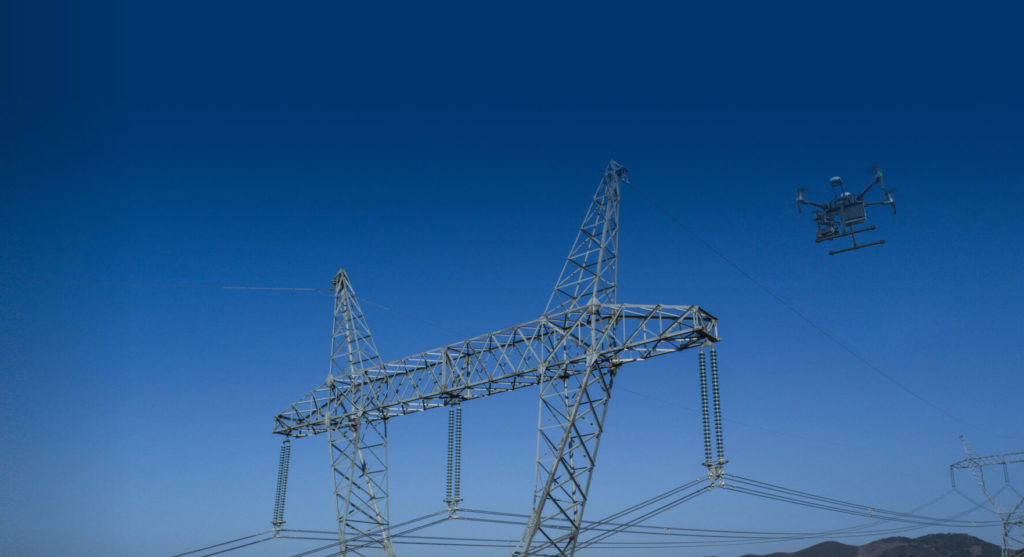
Will laws and systems be developed and deployed by 2020? Who knows. Politics is a fickle thing and all it would take is some epic level idiot, flying their drone into a passenger jet and killing hundreds of people for everyone’s plans to go flying – no pun intended – off the rail.
I hope for the sake of both the drone industry and those innocent people on planes that this doesn’t happen and we have a smooth transition where the worldwide industry agrees upon and enforces a unified global drone law system.
From there if the hard work of companies developing the autonomous drone air management systems pans out, we could begin to see the start of a fully fledged drone delivery industry take shape by 2020. Maybe then I can get my pizza delivered on time…
The benefits include: 1) How to get those silky smooth videos that everyone loves to watch, even if you're new 2) How to fly your drone, from taking off to the most advanced flight modes 3) Clear outlines of how to fly with step-by-step instructional demonstrations and more 4) Why flying indoors often results in new pilots crashing their drone 5) What other great 3rd party apps are out there to get the most out of your drone 6) A huge mistake many pilots make when storing their drone in the car and how to avoid it 7) How to do all of these things whilst flying safely and within your countries laws.
